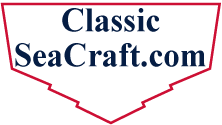
 |
|
|
|
#1
|
|||
|
|||
|
Definitely have to keep the water out but I have also had lots of problems with deterioration of plastic and rubber parts in small engine carbs; 2 stroke and 4 stroke. That could be cheap Chinese rubber though. I think alcohol burns a little cooler also.
__________________
" I'm the one thats got to die when its time for me to die; so let me live my life, the way I want to". J. M. Hendrix |
|
#2
|
|||
|
|||
|
I used Amoco high test in my high compression Corvettes in the 60s - 80s because that was how they ran the best. It was also recommended in the Merc owner's manual, so I used it in my Merc 2 cycles from 1976 until maybe 2003, when I started having issues and discovered even the Amoco high test had ethanol. My issues- very hard starting & initial running following a lunch break of trouble free running in the morning, almost like vapor locked. The fuel bulbs would not stay firm and I tried several bulbs, replaced fuel lines, and on & on. Sometimes had to use starting fluid to get it started. My problems disappeared when I started using real gas as recommended by a Merc mechanic, who also suggested I mount the bulb vertical. A friend who burned up two 2 cycle engines on weedwackers was told by his mechanic to only use real gas in 2 cycles. I've had an ETEC for two years which is supposed to be ok on ethanol- but I have stayed with real gas.
|
|
#3
|
|||
|
|||
|
I should have added that Frank Brown (Carl Moesly's Merc race mechanic) recommended Amoco high test on my two engine purchases from him. He chewed out a friend of mine who was running cheap fuel in his Merc 2 cycle on a SeaBird.
But all that preceded the ethanol daze (intentional spelling)! |
|
#4
|
|||
|
|||
|
Not true. Although E-10 gas contains less energy than pure gasoline as Connor has observed, when you add ethyl alcohol (C2H2OH) to gasoline, you end up replacing some of the hydrocarbon atoms with an oxygen atom, so at the same fuel/air ratio, it will tend to burn hotter due to the extra oxygen! It also burns slower, as do higher octane fuels, so it's used as an octane booster, and as Sandy mentioned, that's why it was used with water injection on highly boosted supercharged/turbocharged engines to prevent detonation. I believe a 10% mixture is worth about +4 points in octane, but beware . . . if you get enough water in it to combine with all the ethanol and separate out, what you thought was 87 octane gas suddenly becomes 83 octane gas, enough to quickly destroy an engine via pre-ignition. (You can't hear pre-ignition on a 2-stroke motor, since there are no valves to rattle, so the first sign of it is when it blows a hole in a piston!)
On newer engines designed to run on E-10 gas, the engines are typically calibrated to run slightly richer mixtures which burn cooler, to compensate for the effects of the extra oxygen. One potential problem with running E-10 gas in an older engine that wasn't designed for it is that it won't have the larger jets for the richer mixture, so you have less margin against the very high temps cause by lean combustion. A slightly lean condition caused by a fuel line restriction or slightly plugged jet that an old motor might tolerate if running pure gas could prove fatal to the same motor running E-10 gas! So if you're running an older (early 90's or older motor) I'd try to run pure gasoline in it if at all possible!
__________________
'72 SeaFari/150E-Tec/Hermco Bracket, owned since 1975. http://i188.photobucket.com/albums/z...Part2019-1.jpg |
|
#5
|
|||
|
|||
|
Quote:
Pretty much everything in my 96 rude fuel system is plastic and rubber of some sort. The old style metal trip deuce carbs were so much more refined than the plastic minlons. OMC probably saved 500 per motah with the minlons. The older omc`s sound like carbd yammis. Sewing machines. |
 |
|
|